






| Authors: |
Lyudmila
Mazur
Uralskijj Federalnyjj Universitet im. Pervogo Prezidenta Rossii B. N. Elcina, Departament "Istoricheskijj Fakultet". |
| Keywords: | Soviet Russia in the early 1920s family reform All-Russia Communist Party Census family structure and change traditional family modern family |
| Data publikacji całości: | 2016 |
| Page range: | 29 (83-111) |
| 1. | Beck, Ulrich. Obshchestvo riska. Na puti k drugomu modern. Transl. by B. Sidelnik, N. Fedorova. Moscow: Progress-Traditsia, 2000. |
| 2. | Chayanov, Alexander, The Theory of Peasant Economy, ed. Daniel Thorner, Basile Kerblay, and R. E. F. Smith. Homewood (IL): R. D. Irwin, 1966. Chernykh, Alla I. “Krylatyi Eros i promfinplan”. Sotsis 8 (1993): 105−13. |
| 3. | Dekret VCIK i SNK ot 18(31) dekabrya 1917 g. ‘O grazhdanskom brake, o detyah i o vedenii knig aktov sostoyaniya’ 18(31) dekabrya 1917 g. In: Dekrety Sovetskoj vlasti. Tom I. 25 oktyabrya 1917 g. – 16 marta 1918 g. Moskva: Gos. Izdatel’stvo politicheskoi literatury, 1957, 247. Accessed 24.04.2016. http://www.hist.msu.ru/ER/Etext/DEKRET/17-12-18.htm. |
| 4. | Dekret VCIK i SNK ot 16(29) dekabrya 1917 g. ‘O rastorzhenii braka’. In: Dekrety Sovetskoj vlasti. Tom I. 25 oktyabrya 1917 g. – 16 marta 1918 g. Moskva: Gos. Izdatel’stvo politicheskoi literatury, 1957, 237–38. Accessed 24.04.2016. http://www.hist.msu.ru/ER/Etext/DEKRET/17-12-18.htm. |
| 5. | Fisher, Wesley A. and Leonid Khotin. “Soviet Family Research”, Journal of Marriage and Family 39 (2) (1977). DOI:10.2307/351131. |
| 6. | Gavrov, Sergey N. Istoricheskoe izmenenie instituta sem’i i braka. Moskva: MGUDT, 2009. |
| 7. | Glass, Becky L. and Margaret K. Stolee, “Family Law in Soviet Russia, 1917−1945”, Journal of Marriage and Family 49 (4) (1987): 893−902. |
| 8. | Goldman, Wendy Z. Women, the State, and Revolution: Soviet Family Policy and Social Life, 1917–1936. Cambridge: Cambridge University Press, 1993. |
| 9. | Hajnal, John. “European marriage patterns in perspective”. In: Population in History, ed. David V. Glass and David E. C. Everslay, 101–143. Chicago: Aldine Publishing Company, 1965. |
| 10. | Kaminsky, Lauren. “Utopian Visions of Family Life in the Stalin-Era Soviet Union”. Central European History 44 (2011): 63–91. |
| 11. | Kazmina, O. V. “Rossijskaya sistema zakonov o brake v 20 veke i tradicionnye ustanovki”. Etnograficheskoye Obozrenie 4 (2003): 69–75. |
| 12. | Kharchev, A. G. “Socialisticheskaya revolyuciya i sem’ya. Iz rukopisnogo naslediya”. Sotsis 6 (1994). Accessed 24.04.2016. http://ecsocman.hse.ru/data/777/532/1216/010_Iz_rukopisnogo_naslediya.pdf. |
| 13. | Kharchev, Anatoly G. Brak i sem’ya v SSSR. Moskva: Mysl’, 1990. |
| 14. | Kodeks zakonov o brake, sem’e i opeke 1926 g. Accessed 24.04.2016. http://wap.praktika.borda.ru/?1-12-120-00000068-000-0-0-1176666001. |
| 15. | Kohn, Edward. “Sex and the Married Communists: Family Troubles, Marital Infidelity, and Party Discipline in the Postwar USSR, 1945–64”, The Russian Review 68 (2009): 429–450. |
| 16. | Kollontay, Alexandra. “Polovaya moral’ i social’naya bor’ba”. In: Alexandra M. Kollontai, Marksistskii feminizm. Text Collection. Tver’: Feminist-Press-Rossia, 2003. |
| 17. | Kollontay, Alexandra M. Sem’ya i kommunisticheskoe gosudarstvo. Moskva, 1918. |
| 18. | Kollontay, Alexandra. Prostituciya i mery bor’by s nei. Moskva 1921. |
| 19. | Krupskaya, Nadezhda K. “Brachnoe i semejnoe pravo v Sovetskoi Respublike”. Kommunistka 3–4 (1920): 17–18. |
| 20. | Lazis, Otto. Perelom: Stalin protiv Lenina. Moskva: Politizdat, 1989. |
| 21. | Lenin, Vladimir I. “Velikij pochin”. In: Vladimir I. Lenin, Complete Works. Vol. 39. Ed. 5. Moscow: Izdatel’stvo politicheskoi literatury, 1970. |
| 22. | Lisitsyn, A. K. “K voprosu o sem’e i brake (v diskussionnom poryadke)”. Kommunistka 12 (1923): 24–26. |
| 23. | Matskovsky, Mikhail S. Sociologiya sem’i: Problemy teorii, metodologii i metodiki. Moskva: Nauka, 1989. |
| 24. | Mazur, Lyudmila, Oleg Gorbachev. “Primary Sources on the History of the Soviet Family in the Twentieth Century: an Analytical Review”. The History of the Family 21 (1) (2016): 101–120. DOI: 10.1080/1081602X.2015.1031808. |
| 25. | Mehnert, Klaus. Sovetskii chelovek. Moskva 1959. |
| 26. | Mikhailova, Anna I. “Osmyslenie fenomena odinochestva kak social’nogo yavleniya”. Journal of Transbaikal State University (2013). Accessed 24.04.2016. http://uchzap.\ru/ru/journals/587. |
| 27. | Mironov, Boris N. Social’naya istoriya Rossii perioda imperii (XVIII – nachalo XX vv.) in 2 vols. Sankt Petersburg: Dmitriy Bulanin, 1999. |
| 28. | Narodnoye khozyajstvo SSSR za 60 let. Statisticheskii sbornik. Moskva: Statistika, 1977. |
| 29. | Panin, Stanislav E. “Bor’ba s prostituciej v Rossii v 1920-h godah”, Voprosy Istorii 9 (2004). |
| 30. | Pokrovsky Nikolay E., ed. Labirinty odinochestva. Moskva: Progress, 1989. |
| 31. | Shapovalova, Yanina A. “Politika bol’shevikov v otnoshenii sem’i v pervye gody Sovetskoj vlasti”. Obshchestvo: Politika, Ehkonomika, Pravo 1 (2010). |
| 32. | Sorokin, Pitirim A. “Vliyanie vojny na sostav naseleniya, ego svojstva i obshchestvennuyu organizaciyu”. In: Ekonomist. Omnibus Edition 1921–1922. Moskva: Terra Budushego, 2008. |
| 33. | Spisok naselennyh punktov Ekaterinburgskoj gubernii s vazhnejshimi statisticheskimi dannymi i alfavitnym ukazatelem (Ekaterinburg 1923). |
| 34. | Stites, Richard. Zhenskoe osvoboditel’noe dvizhenie v Rossii. Feminizm, nigilizm i bol’shevizm. 1860–1930. Moskva: ROSSPEN, 2004. |
| 35. | Todd, Emmanuel. Explanation of Ideology: Family Structures and Social Systems (Family, sexuality, and social relations in past times). Transl. by David Garrioch. Oxford: Blackwell, 1985. |
| 36. | Turton, Katy. “Revolution Begins at Home?: The Life of the First Soviet Family”, Family and Community History 8 (2) (2005). |
| 37. | Vishnevsky, Anatoly G. “Evolyuciya rossiiskoi sem’i: XX vek: Ot krest’yanskoi sem’i k gorodskoi (prodolzhenie)”. Ecologia i Zhizn 8 (2008). Accessed 24.04.2016. http://elementy.ru/lib/430651. |
| 38. | Volkov, Andrey G. “Evolyuciya rossijskoj sem’i v XX veke”. Mir Istorii 4 (1999): 47–57. |
| 39. | Vorobyov, Nikolay I. “Sem’ya v Nerekhte. (K voprosu ob analize sem’i)”. In: Sovetskaya demografiya za 70 let (Iz istorii nauki), ed. Timon V. Ryabushkin, 110–130. Moscow: Nauka, 1987. |